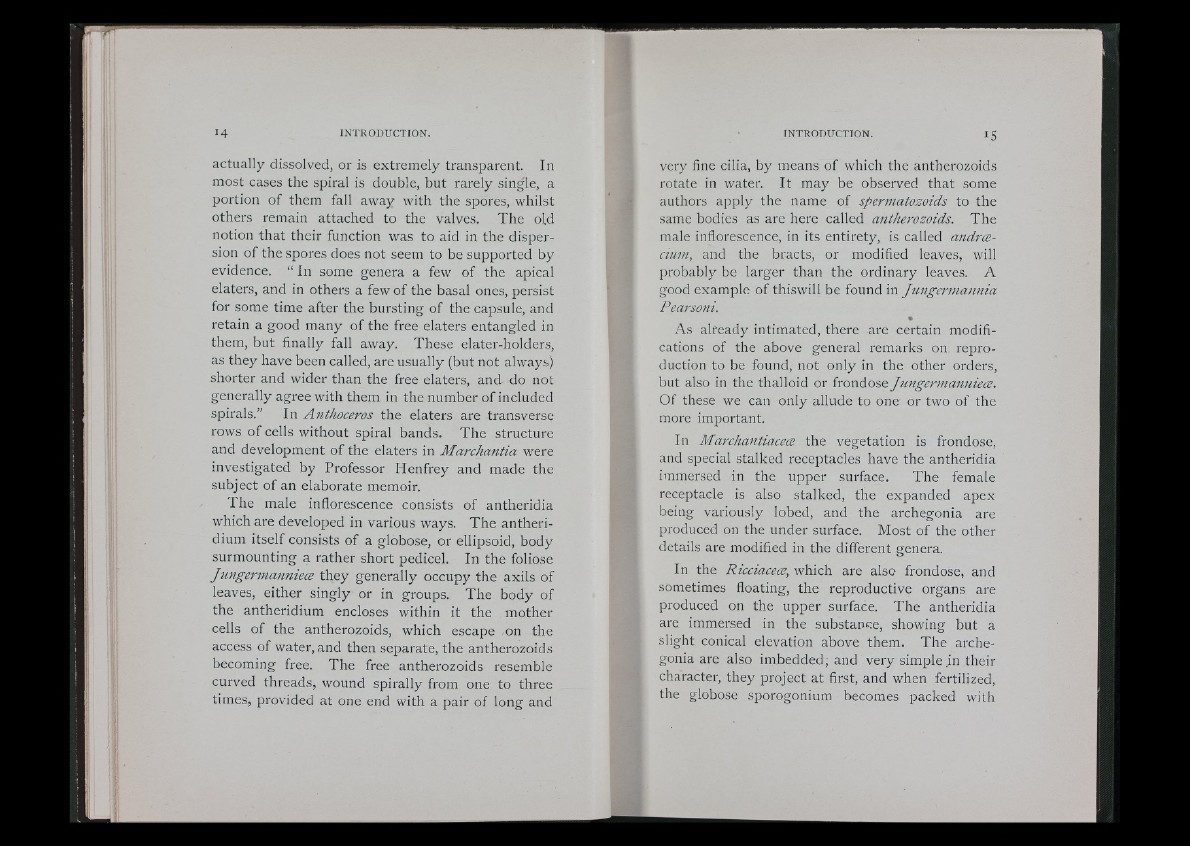
actually dissolved, or is extremely transparent. In
most cases the spiral is double, but rarely single, a
portion of them fall away with the spores, whilst
others remain attached to the valves. The old
notion that their function was to aid in the dispersion
of the spores does not seem to be supported by
evidence. “ In some genera a few of the apical
elaters, and in others a few of the basal ones, persist
for some time after the bursting of the capsule, and
retain a good many of the free elaters entangled in
them, but finally fall away. These elater-holders,
as they have been called, are usually (but not always)
shorter and wider than the free elaters, and do not
generally agree with them in the number of included
spirals.” In Anthoceros the elaters are transverse
rows of cells without spiral bands. The structure
and development of the elaters in Marchantía were
investigated by Professor Henfrey and made the
subject of an elaborate memoir.
The male inflorescence consists of antheridia
which are developed in various ways. The antheri-
dium itself consists of a globose, or ellipsoid, body
surmounting a rather short pedicel. In the foliose
Jungermannieæ they generally occupy the axils of
leaves, either singly or in groups. The body of
the antheridium encloses within it the mother
cells of the antherozoids, which escape on the
access of water, and then separate, the antherozoids
becoming free. The free antherozoids resemble
curved threads, wound spirally from one to three
times, provided at one end with a pair of long and
very fine cilia, by means of which the antherozoids
rotate in water. It may be observed that some
authors apply the name of spermatozoids to the
same bodies as are here called antherozoids. The
male inflorescence, in its entirety, is called andræ-
cium, and the bracts, or modified leaves, will
probably be larger than the ordinary leaves. A
good example of thiswill be found in Jungerinannia
Pearsoni.
As already intimated, there are certain modifications
of the above general remarks on reproduction
to be found, not only in the other orders,
but also in the thalloid or frondose Jungerniannieoe.
Of these we can only allude to one or two of the
more important.
In Marchantiacece the vegetation is frondose,
and special stalked receptacles have the antheridia
immersed in the upper surface. The female
receptacle is also stalked, the expanded apex
being variously lobed, and the archegonia are
produced on the under surface. Most of the other
details are modified in the different genera.
In the Ricciaceæ, which are also frondose, and
sometimes floating, the reproductive organs are
produced on the upper surface. The antheridia
are immersed in the substance, showing but a
slight conical elevation above them. The archegonia
are also imbedded; and very simple in their
character, they project at first, and when fertilized,
the globose sporogonium becomes packed with